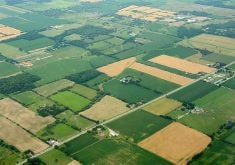THE Canadian Prairies could take a page from a Maritime province’s book
on how to add value to farms.
New Brunswick has about 959,000 acres of farmland, or about 2.6 percent
of the total land base in the province. Almost 368,000 acres are in
crops.
With only about 3,200 farms in the province, the totals would be
considered a modest agricultural venture by prairie standards. Alberta
has more than 53,000 farms, Saskatchewan more than 50,000, and Manitoba
has 21,000.
New Brunswick is unique because 84 percent of its primary agriculture
Read Also

Budget seen as fairly solid, but worrying cracks appear
The reaction from the agriculture industry to prime minister Mark Carney’s first budget handed down November 4th has been largely positive.
production is processed before it reaches the market. That’s the
highest percentage among provinces.
For every dollar of farm cash receipts in New Brunswick in 1999, $3.75
was made from agri-food processing. In comparison, the Prairies occupy
three of the four lowest spots on the agri-processing dollar list. The
ratio for Alberta was $1.08, Manitoba 81 cents and Saskatchewan 27
cents.
A telling statistic shows that although half of Canada’s wheat crop is
grown in Saskatchewan, about 80 percent of the milling wheat is
exported.
Potatoes are the main crop in New Brunswick but greenhouses and
floriculture, fruits, berries and vegetables have increased their
importance. As they find ways to diversify their businesses, farmers
sell to retail and wholesale markets, open wineries or seek ways to
blend their products with others to tap niche markets.
These activities have generated 5,700 jobs in secondary processing,
mostly in rural communities. They offer off-farm income and keep young
people in the community.
A portion of the value-added enterprises in New Brunswick is tied to
on-farm businesses that rely on farmgate sales. On the Prairies, that
would be impractical due to the sparse population, greater distances
between farms and the distance of most farms from major centres.
But attitude is also a big factor.
“Farming has to be profitable,” said one New Brunswick producer who
regularly analyzes all parts of his farming business.
He has 25,000 laying hens, a feed mill and a composting system for farm
organic waste that he then sells. He also grows greenhouse peppers and
has an apple cider processing plant.
Other farm entrepreneurs say they aim their marketing efforts at
international consumers and are able to adapt to international
competition.
There is a difference between sales and marketing, said one, and
farmers must understand the difference.
A move from a sales mentality to a marketing approach has helped
farmers in New Brunswick.
A similar but prairie-tailored approach could reap dividends for
farmers on the Prairies.














